Wooden Kero
Keros (sometimes called queros) act as more than just a drinking cup; they can literally seal a person's fate based on how they receive them. They also have changed over time. They began as carved cups made from wood, silver, or gold (when referring to the metal versions, called aquillas), under the Inca (ca. 1438-1532), and even resonance in pre-Inca times. The Spanish arrival in the Andes in the 1520s caused an upheaval in the kero concept, changing to painted images that hold this memory of exchange. Each kero comes as one part of an identical pair. They are used to signify social and political relationships, sometimes for marriage, and others as an act of conquest.
First, I should describe a bit of the Inca history of these vessels. Rooted in their mythology, these drinking vessels relate to the ruins of Tiahuanaco. The creator deity, Viracocha, used the ruins to create different ethnic groups and spread them across the lands. Scholars trace back much of the Inca's architecture and sculptures to this physical site. However, it represented the Inca origin story to the people. The kero's image also comes from Tiahuanaco. Made by a specific craftsman called querocamayocs, they are cylindrical vessels, sometimes with straight sides and others with an hour-glass shape. Pre-Columbian keros use geometrical incised patterning. During feasts held in Cuzco or an intimate gathering to make a deal, these cups came with a specific set of social practices, much like manners within our own society. By accepting the cup and drinking the corn beer called chicha, an individual or community would be accepting the exchange or deal. A bond is formed between the two participants, and the specific keros represented that bond. This exchange act was essential to the Inca's political power; each community under their rule had to accept the drink or literally face war.
Inca King Atahualpa XIIII Portrait, Anonymous Artist from the Cusco School, 16th c.
The first interaction between the Inca and the Spanish was marked by this ritual act. The encounter happened on November 16, 1532, between the Inca king Atahualpa and the Spanish conquistador Francisco Pizarro. We can say in hindsight that the customs and social behavior of each society were not read correctly. Each side tells a different story of what happened. The Spanish were handed an aquilla (a gold kero) and asked to drink but instead poured it out. Then, Atahualpa was given a book, the Bible, but became offended after the drink's visible rejection then he tossed the Bible to the side. The reception did not go well, and the war was initiated.
Portrait of Francisco Pizarro (1475–1541), painted by Amable Paul Coutan, 1835
After the execution of Atahualpa (July 26, 1533), a new king was instated, Manco Capac II. During the coronation, filled with drinking and rejoicing, Pizarro arrived at the scene, now understanding Inca customs. However, he used them to his own benefit. He demanded the people accept the Spanish King as their sovereign and acknowledge the Church; otherwise, they have the moral right to war. Whether or not this message was so direct to the people, the new Inca King accepted and drank. The kero custom also changed; the iconography became painted rather than incised. The use of pictorial images instead of abstract forms represented the Spanish tradition, while the subject matter and composition were distinctly Andean. They represented an act of rebellion and resistance to the Spanish Crown.
Keros and aquillas have a deep history of violence and reciprocity, often at the center of decision making. They were mass-produced in the 16th, 17th, and 18th centuries, and some are still used during communal rituals in Peru and Bolivia. I find it incredibly fascinating to think about how each one has a pair; the one you see in the museum has a partner in the world somewhere! The kero at MoNAH is colonial. We can tell because of the painted surface, even if the paint has come off quite a lot. Nonetheless, it still stands as a testimony to whatever agreement may have been made a few hundred years ago!
Blog Post by Jazlyn Sanderson
Sources
Tom Cummins, Toasts with the Inca. Andean Abstraction and Colonial Images on Quero Vessels. Ann Arbor: The University of Michigan Press, 2002.


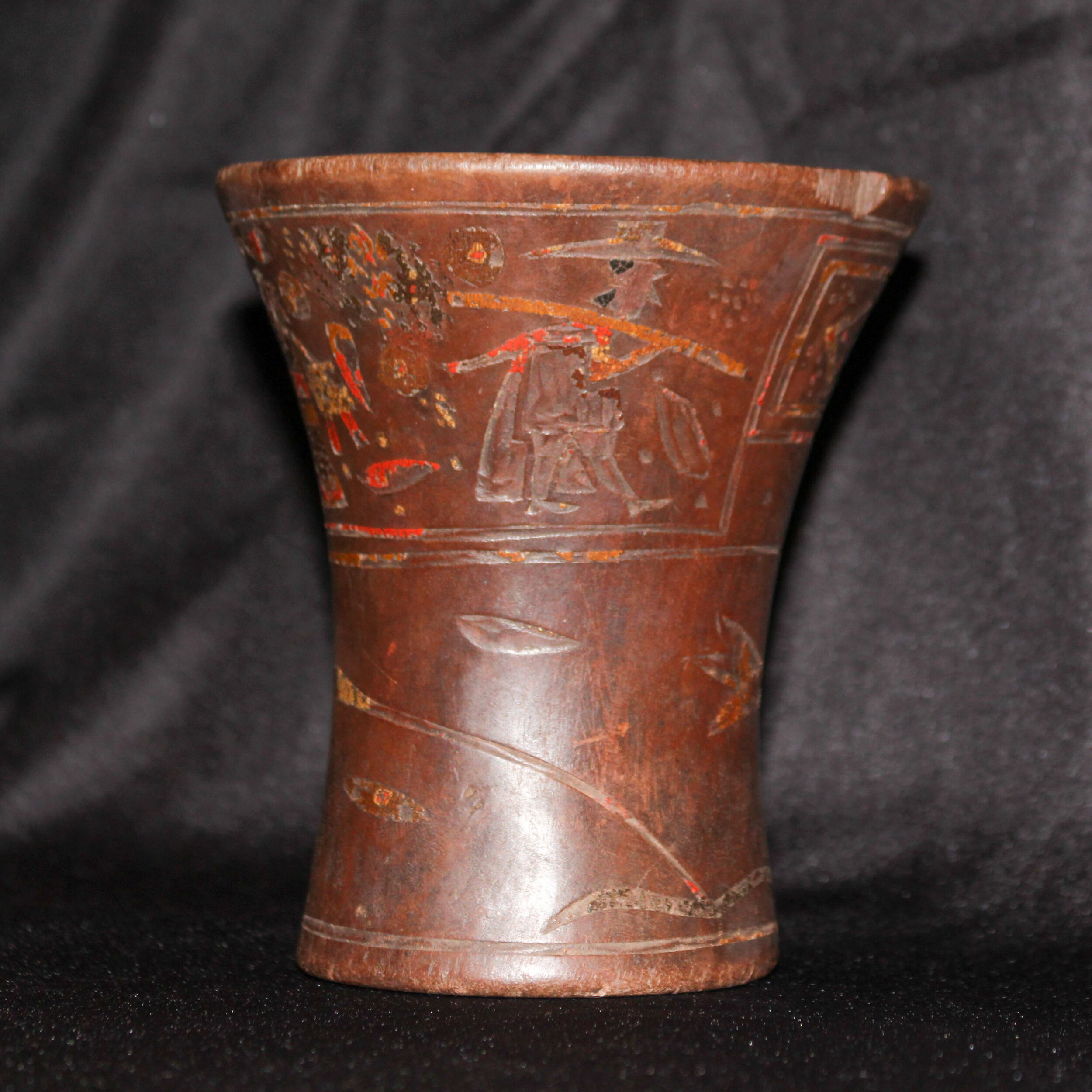
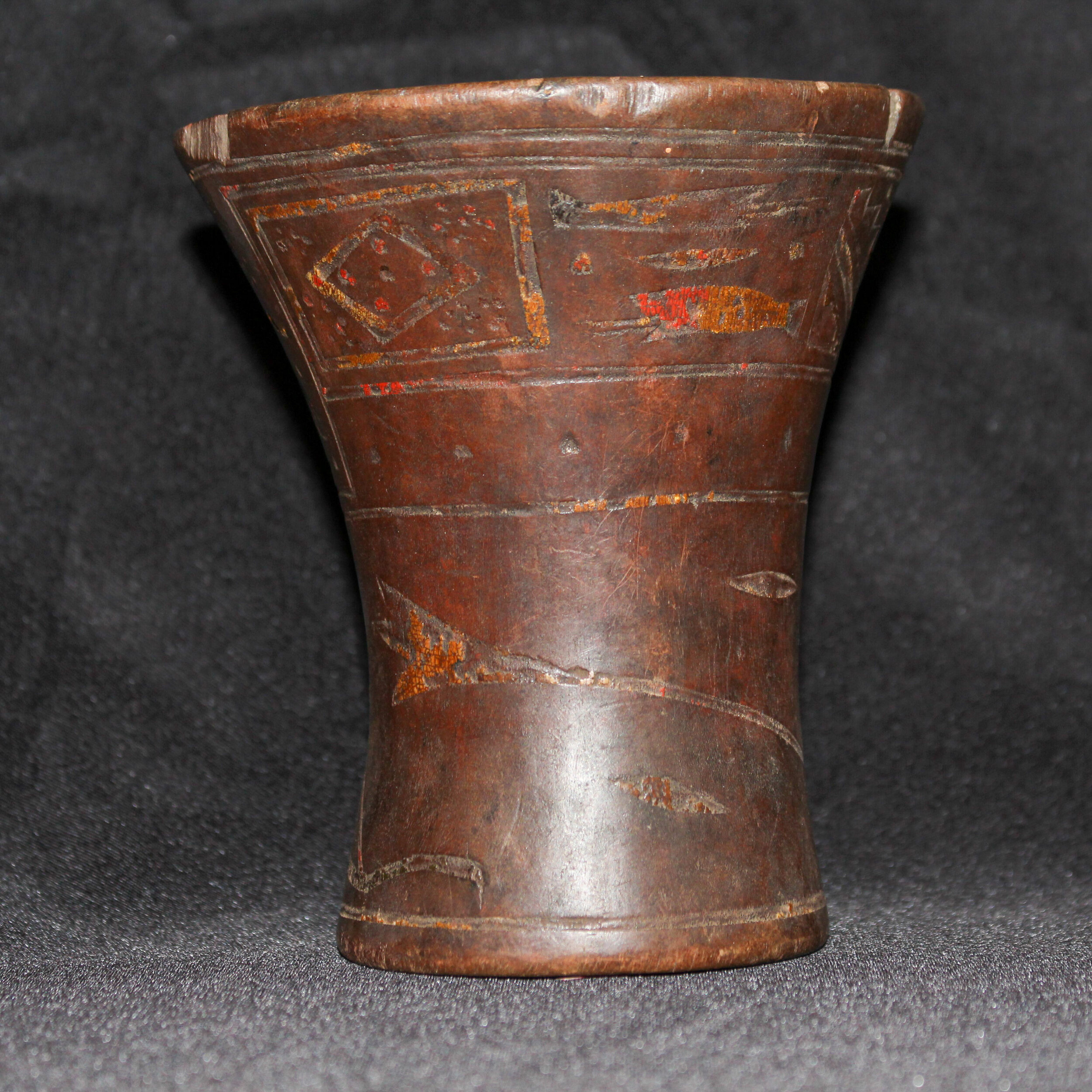
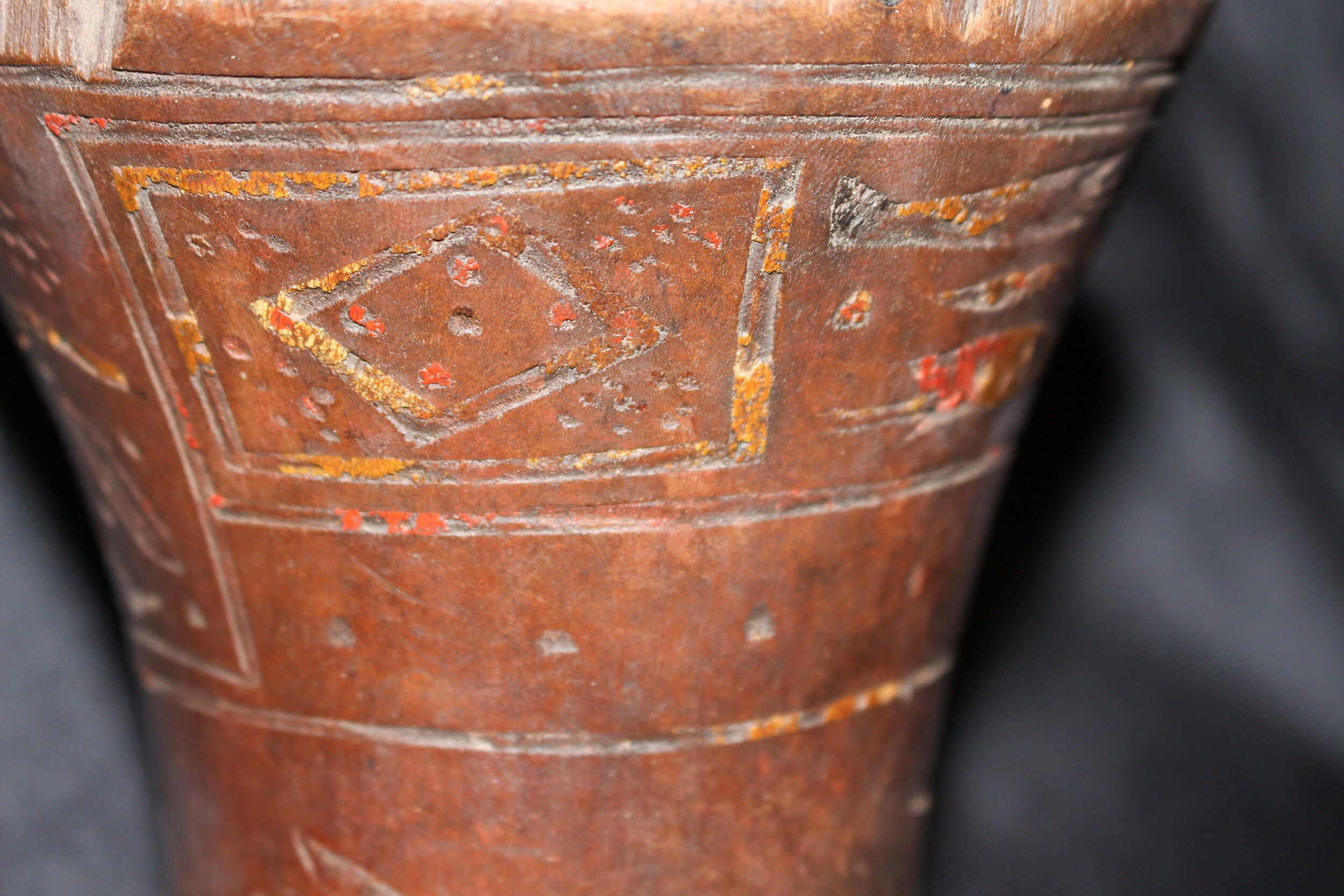
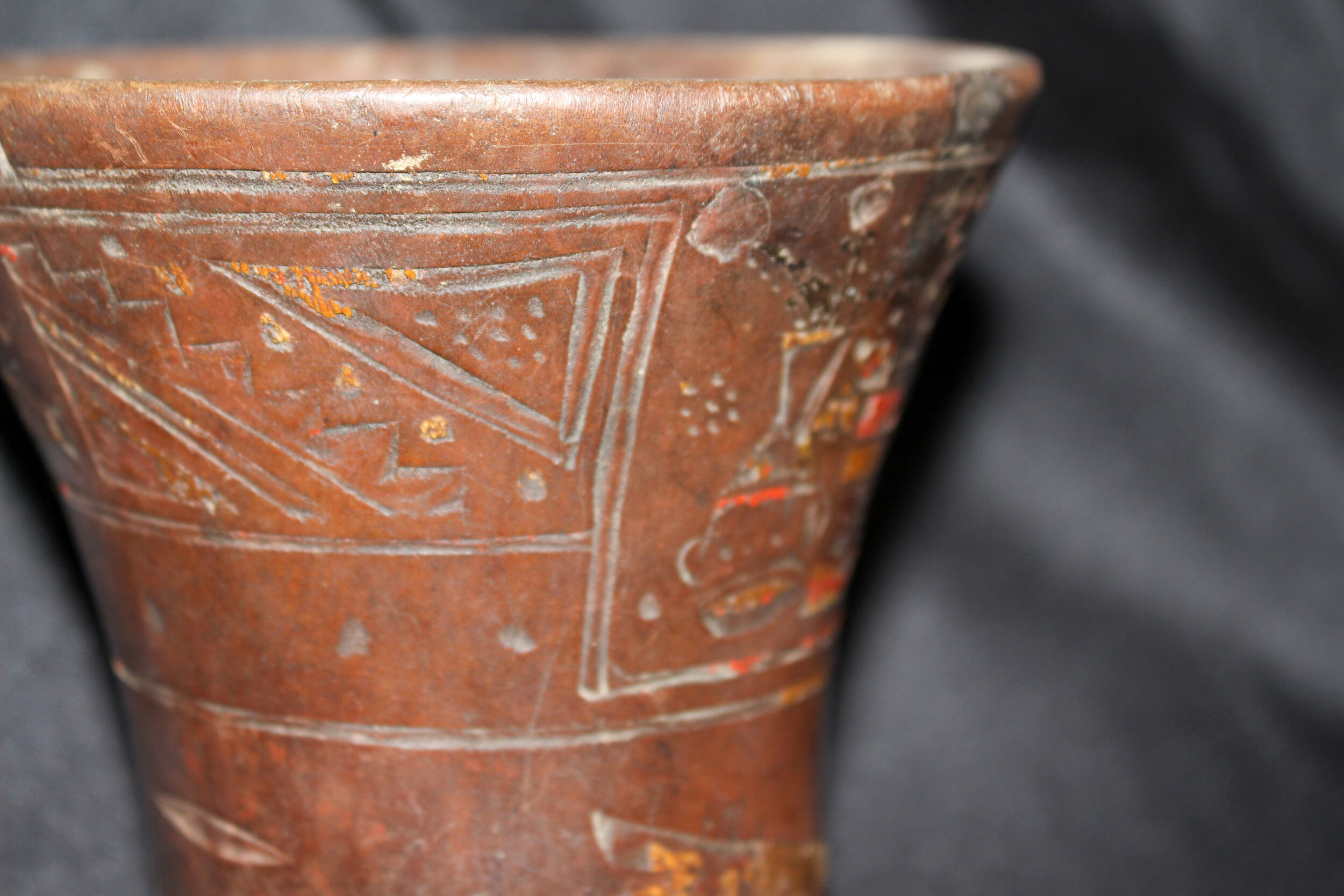
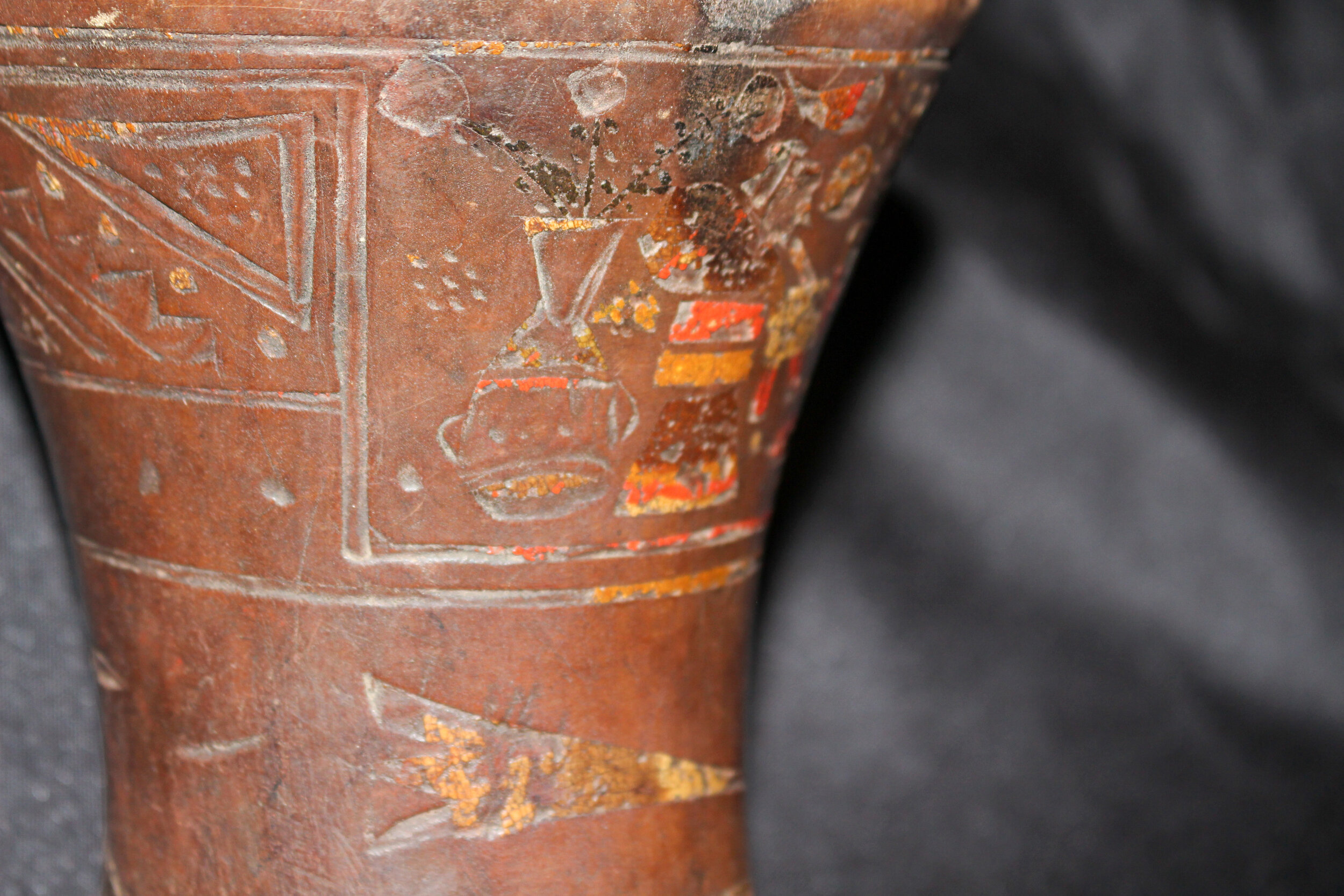

This phenomenal ceramic figure you see here is a part of the Jama-Coaque tradition from 1,400-2,300 years ago! While much of the culture remains elusive, their powerful ceramic figurines tell their stories to us today.